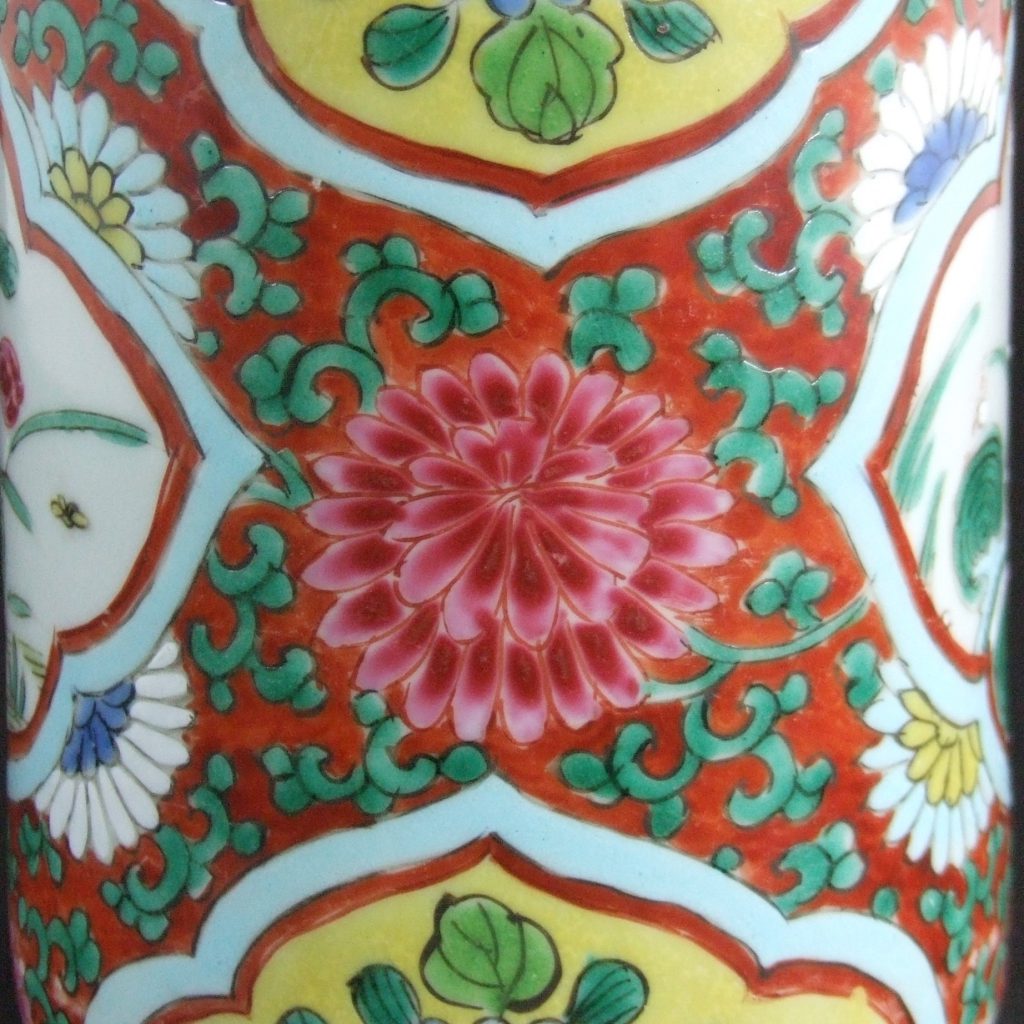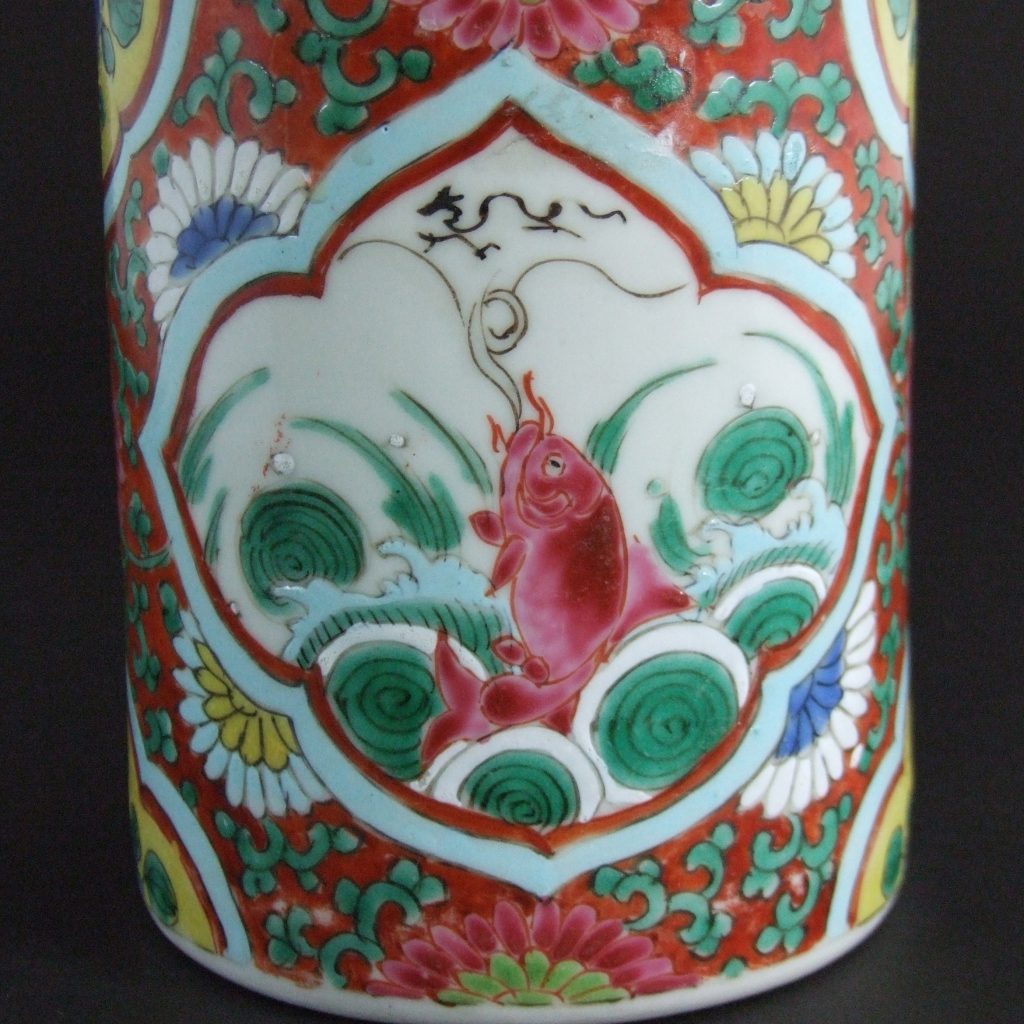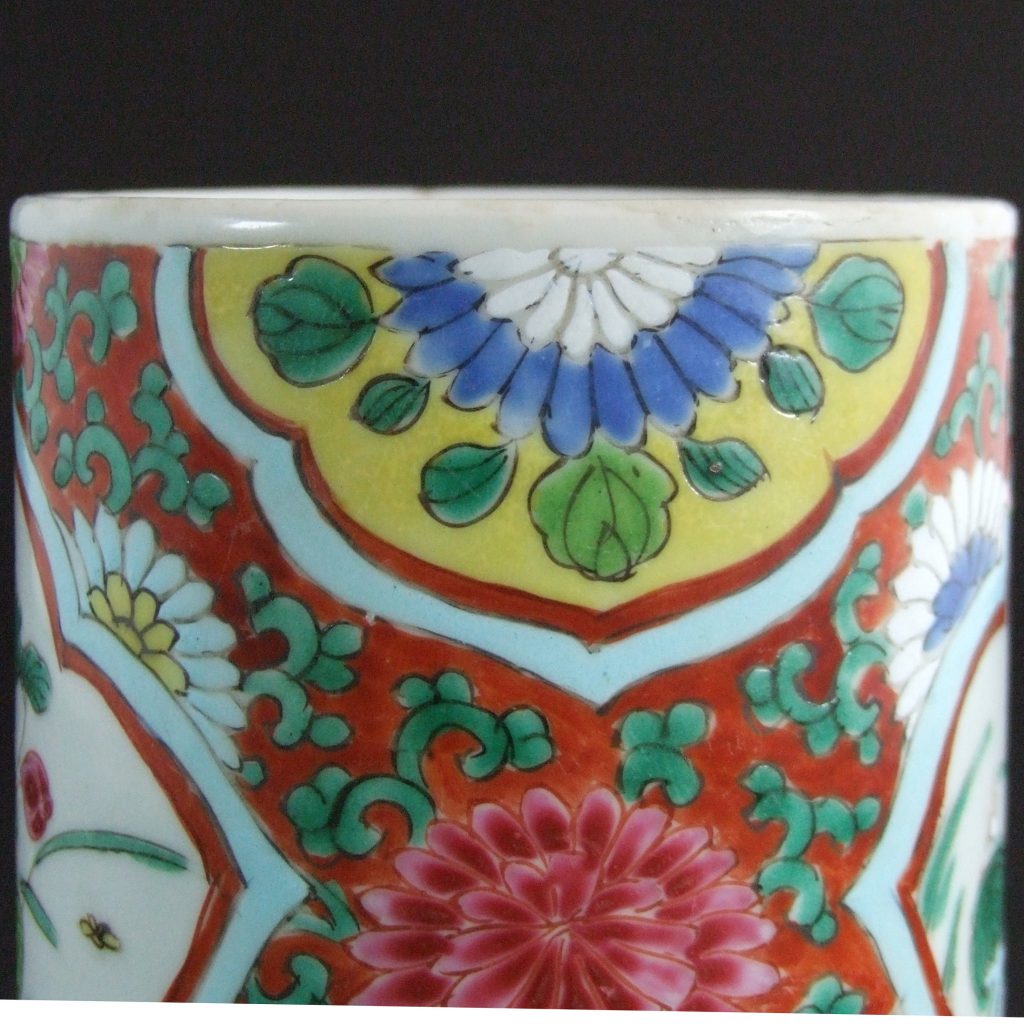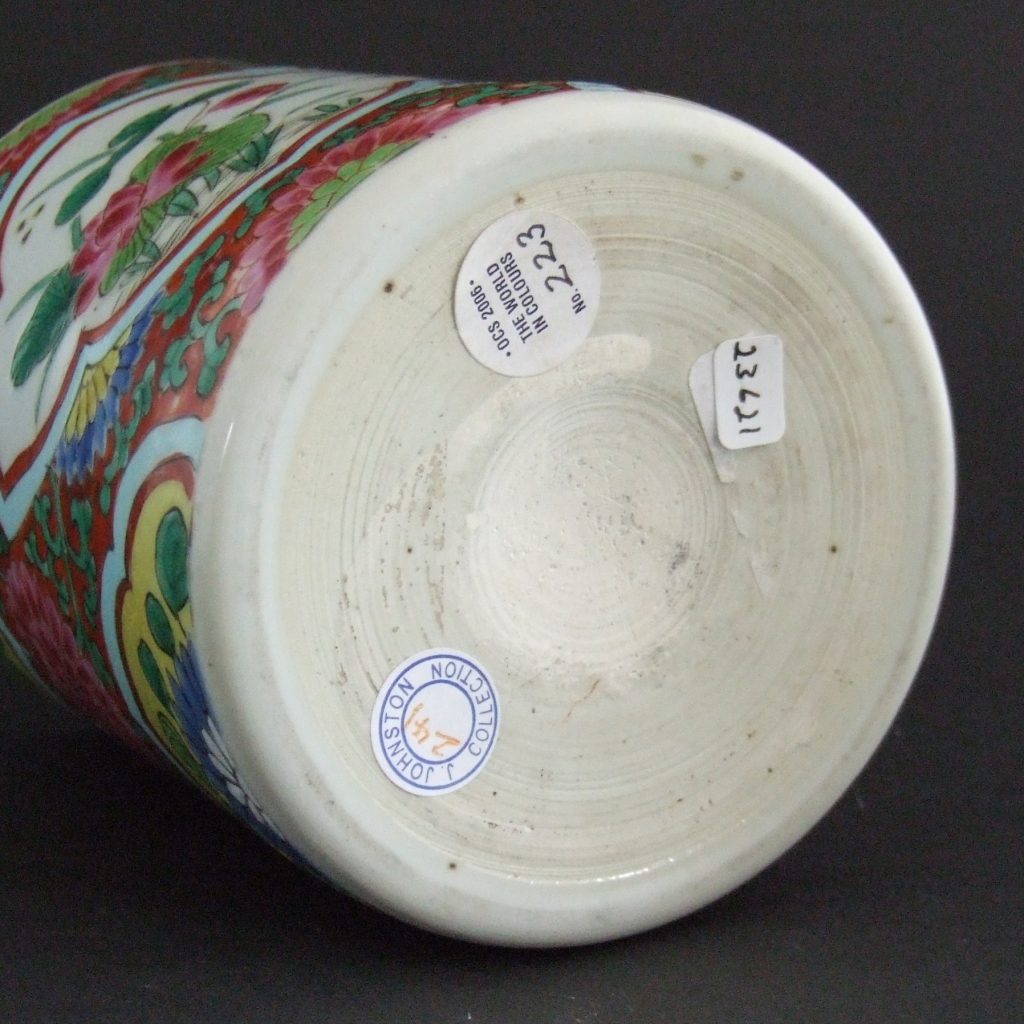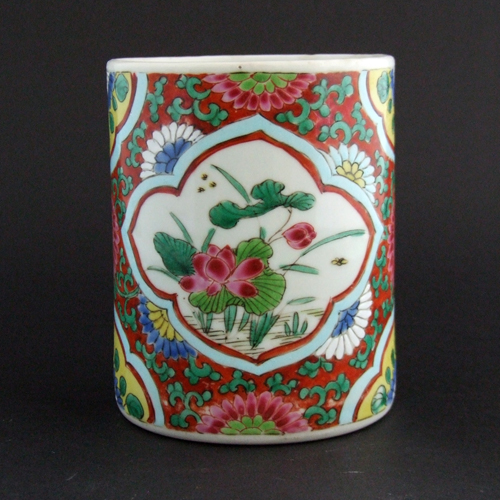
YONGZHENG or QIANLONG C.1730 – 1745 Chinese Taste Porcelain
A Chinese Taste Famille Rose Porcelain Brushpot, Yongzheng Period (1723-1735) or Early Qianlong (1736-1795) c.1730-1745. Decorated in Rich Thick Early Famille Rose Enamels Including Translucent Green. The Other Colours are Far More Opaque and Include a Paler Green, Turquoise and a Pink of a Dark Tone but with Areas Where it has Been Left Thinner. The Main Ground Colour is a Thin Rusty Tomato Red, A Rich Opaque Yellow has Been Used in Smaller Amounts as a Second Ground Colour.
SOLD
- Condition
- Small rim chips / fritting restored, c.30 x 2 to 4 mm on the outside and rather less to the inside of the rim. A small chip or frit c.3x3 mm. One or two minute frits filled ( c.1 or 2 mm).
- Size
- Height : 12. 5 cm (5 inches ).
- Provenance
- Sotheby`s Amsterdam as 18th Century A Private Irish Collection of Chinese and Japanese Porcelain. Exhibited : The World in Colours number 223. Label to the base. Published in : The World in Colours, An Exhibition of Ceramics with Coloured Decoration Dating From 700 to 1920 Belonging to Members of the Oriental Ceramic Society. (Exhibition of the Oriental Ceramic Society, Introduction by Rose Kerr and Philip Allen, catalogue entries by Jean Martin, 2006.ISBN 0-903421-27-5) Incorrectly described as 19th century.
- Stock number
- 23621
Information
Brushpots, Bitong :
Bitong, brushpots are not found in 17th or early 18th century European inventories unlike some other ceramic forms which fore fill a specific Chinese function. Blanc de chine `libation cups`, were for example, were made for drinking wine in China but they were imported in large numbers into the West. There curious forms appealed to Western tastes and were used in European displays or converted with the addition of a gilt bronze handle to become a bonbon dishes. Brushpots on the other hand seem to have been made exclusively for the Chinese domestic market, more specifically for the scholar literati class.Bitong are an essential part of literati`s desk, what is often referred to as a scholars desk. Other scholarly items for the desk might include a brush-rest, inkstone (for grinding the dry ink) a water pot for the water to add to the inkstone, a brushwasher as well as a table screen.
